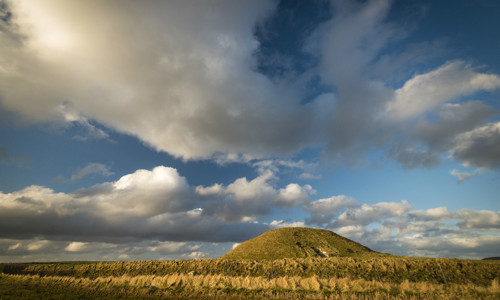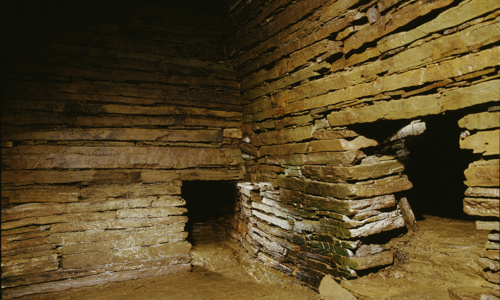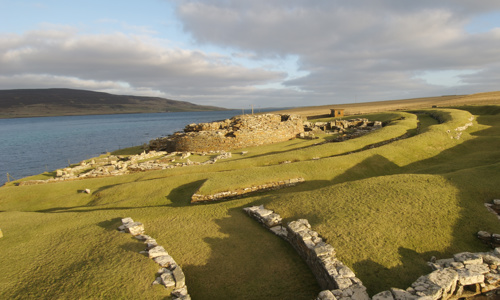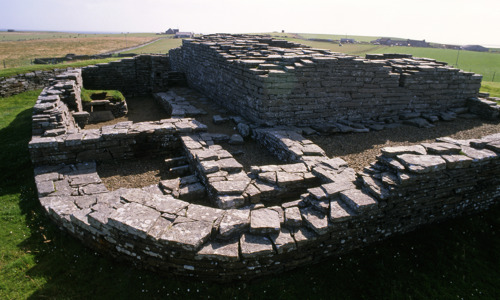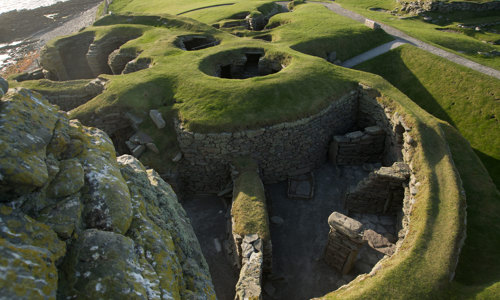History
Site of the saga
The Earl’s Bu and Church are strongly associated with the Orkneyinga Saga. The saga is an account of the history of Orkney from its capture by a Norwegian king in the 800s until about 1200.
It tells of a Yule feast given by Earl Paul at his bu, or residence, at Orphir in 1136. The saga records:
‘There was a large drinking-hall; the door was near the east gable on the southern wall, and a magnificent church stood before the hall door, and one had to go down to the church from the hall.’
The remains of the church survive to this day, and it’s possible that the large ruined building next to it was the drinking hall.
The Orkneyinga Saga also mentions Cubbie Roo’s Castle and Eynhallow Church.
Holy Land connection
Orphir Church is circular, which is unusual: there’s only one other round medieval church in Scotland, at Roxburgh near the English border.
Circular churches were inspired by the rotunda of the Church of the Holy Sepulchre in Jerusalem. Earl Haakon Paulsson of Orkney travelled to Jerusalem after the First Crusade of 1099 to atone for ordering the death of Earl Magnus (later St Magnus) on Egilsay. He probably built St Nicholas Church at Orphir soon after his return.
The church would have featured:
-
a circular nave, the wall of which can still be seen
-
a vaulted ceiling for the nave, with a central skylight
-
a semi-circular stone-vaulted apse, still intact today
-
a round-arched window in the apse’s east wall, illuminating the altar
History upon history
What we see today would have been part of a far larger settlement complex. A Norse horizontal mill dating to the AD 1000s was found immediately north of the site in the 1980s, the earliest of its type to be recognised. Mills of this kind remained in use in Orkney for centuries – see Click Mill for a working example.
Two Pictish symbol stones were discovered on the site during excavations in the 1930s, but are now lost. It’s possible that when the Norse settled here they were taking over a high-status Pictish estate.


